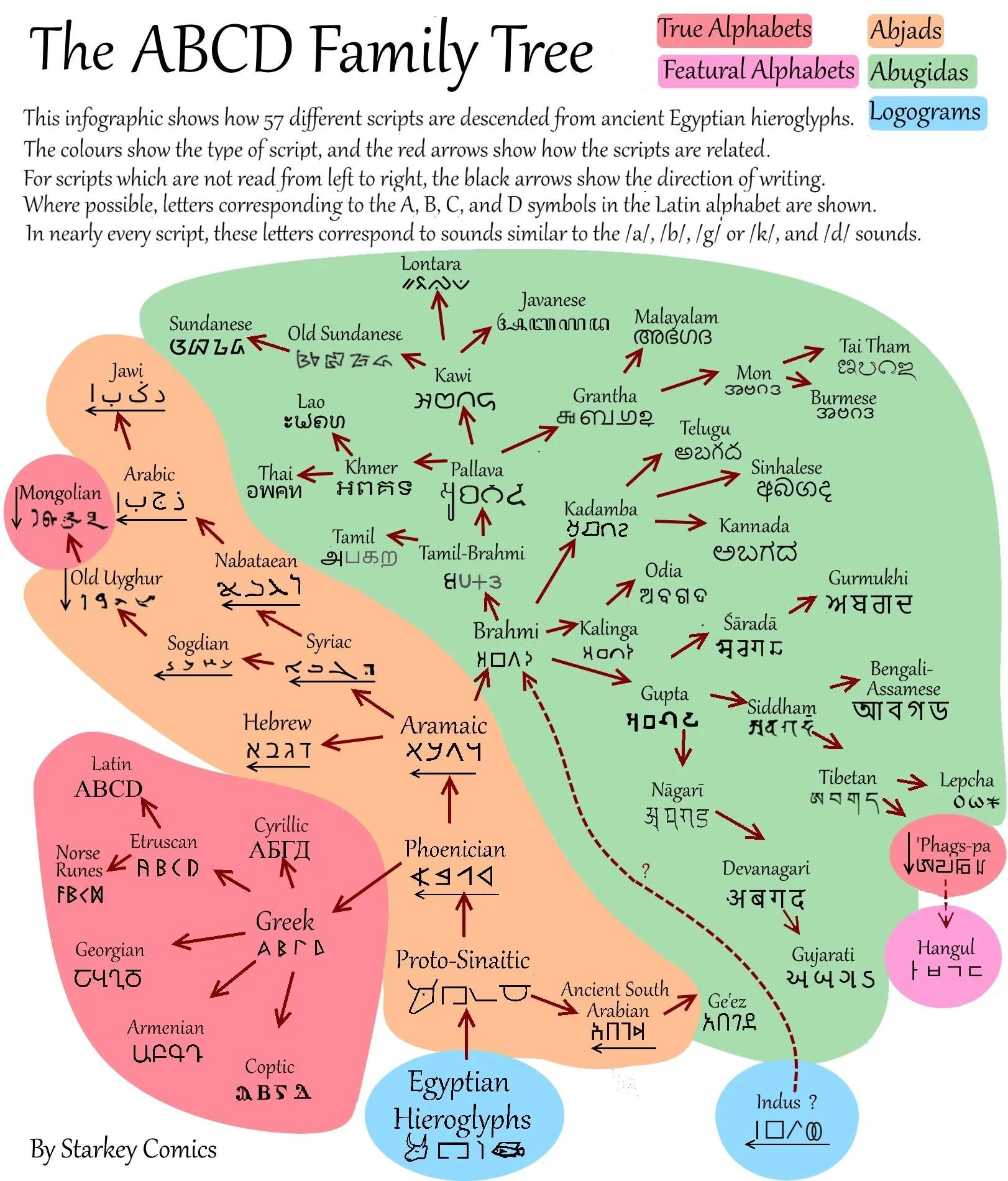An infographic showing the relationship between different scripts used in languages across the world.
These 57 different scripts are all thought to have ultimately evolved from the hieroglyphs the Egyptians used over 5000 years ago.
I have tried to display the relationships between scripts by showing how 4 symbols in Hieroglyphs,evolved into letters used in most of these scripts. Which is why I call it “The ABCD Family Tree”.
True alphabets like the Latin script, where each sound is represented by a letter, are the most widely used writing systems.
However, there are a huge variety of other systems in use all over the world:
Abjads, like the Hebrew and Arabic scripts, use letters to show consonants, but often don’t display vowel sounds at all.
Abugidas, or alphasyllabary scripts, can be found throughout southern Asia. They mainly use symbols that signify consonant vowel pairs (such as /ba/ or /ga/).
Logograms are symbols that can represent entire words. Logographic scripts are most commonly found in east Asia, but Egyptian hieroglyphs are also example of this writing system.
And finally Hangul, the Korean writing system, is a featural alphabet. This means individual features of sounds are displayed (like how the sound is created), rather than just the sounds themselves. Hangul was invented in 1443 and is thought to have borrowed elements from Tibetan scripts.
Some writing systems not included:
Chinese, Japanese, and related scripts, because they are descended from the Oracle Bone Script of ancient China.
Sumerian Cuneiform, which appeared in the ancient Sumeria around 3200BC, about the same time as Egyptian Hieroglyphs, but seems to be entirely unrelated to them.
The Central American scripts, like Mayan and Aztec, which are unrelated.
The many descendents of Old Kawi: I only had room for 3, Javanese, Lontara, and Sundanese. But there is also Balinese, Batak, Rencong, Rejang, Baybayin, Buhid, Hanunó’o, Kulitan, and Tagbanwa. I’m afraid I just didn’t have space to squeeze them all onto the image.
Ogham is a medieval Irish alphabet that is very different from anything on this chart. It is probably inspired by Latin script and Germanic runes, but bears little similarity to either of them. A B C D in ogham is ᚊ ᚋ ᚌ ᚍ.
The Thaana script of the Maldives. The letters of this script are derived from a mixture of Arabic numerals, Indian numeral, and Arabic letters, so it can’t really be compared to other scripts.
The Tifinagh script used by the Berber languages, which has mysterious origins. It probably comes from the Libyco-Berber script of ancient North Africa, which may be descended from Phonetician. We have no evidence of this, however, and Tifinagh does not resemble any other script.
The many scripts invented for the indigenous languages of North America, such as the Cherokee syllabary and the Inuktitut syllabics, which were inspired by some of the scripts on my image, but can’t really be said to have evolved from them.
Systems like Persian, which are basically just altered versions of other scripts, rather than totally separate scripts.







